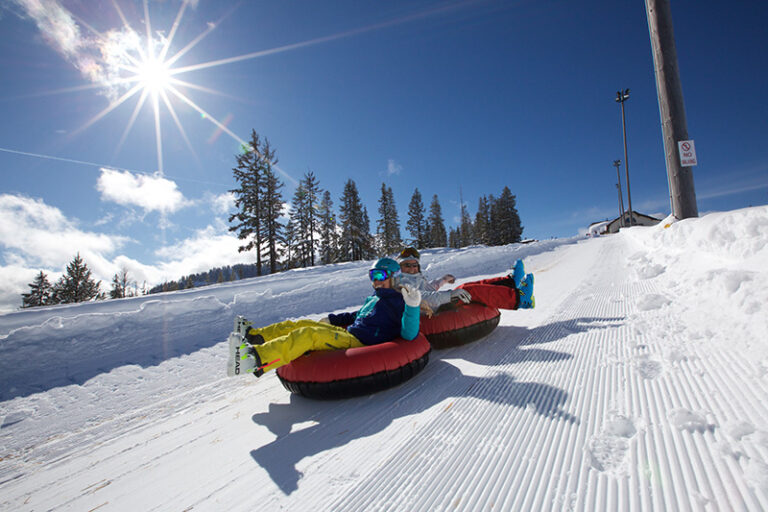Can big-box retailers such as Target, Wal-Mart and Bed Bath & Beyond coexist in a small rural town, with a declining, but architecturally significant city center? The City of Ellensburg hopes so. In the Spring of 2005, the City set out to reevaluate its Comprehensive Plan when a single owner with 70 acres of land on the west side of town wanted a land-use amendment to begin marketing their land to big box retailers.
The reevaluation process that resulted was remarkable for its hefty public involvement and uniform public support for preserving the existing downtown. Public comments numbered in the “many, many thousands,” and citizen groups such as Citizens Against Sprawl formed while others began publicly posting reading lists including James Howard Kunstler’s Geography of Nowhere, Joel Hirschhorn’s Sprawl Kills and Van der Ryn and Calthorpe’s Sustainable Communities. A lot of people in Ellensburg did not want to see their downtown further deteriorate in the presence of regional retail. (Regional retail denotes big box stores that serve a large area.) Citizens in Ellensburg began to show a compassion for and commitment to their city by working on a policy specific to their civic situation.
“What was clear across the board, was that downtown was a jewel. People wanted to know how best to revitalize it, how to help it transition into the future,” says Bill Grimes, Principal of Studio Cascade, a community planning and design firm from Spokane that was asked to facilitate the process. Studio Cascade began working with the City of Ellensburg in the Spring 2005 to develop a draft revision.
“We did a huge amount of community outreach. During our initial workshops 14% of the voters in Ellensburg participated. After that a survey went out to households, we held a series of open houses and focus group exercises-it was a full-court press in outreach,” says Grimes.
The public outreach payed off. Citizens became involved. People began to talk. Dialogue began on websites, public forums and letters to the editor. Democracy was at work. Questions such as retail leakage, the support of local economies, how growth can best be accommodated, environmental degradation, and issues around affordability were discussed.
Although preserving the downtown was key, not everyone in Ellensburg was opposed to regional retail or big box stores. “Some felt it [big box retail] was a necessary evil. It needed to be allowed in the Central Business District. The thought was that people are already shopping in big box stores-don’t make them drive to Yakima to do it,” says Grimes.
Locally-owned stores are often more expensive than larger national chains. For some Ellensburg residents, the hope of regional retail filled an economic need.
“I support the building of a retail center … It is almost impossible to believe that an area as large as Kittitas County, and its jewel city, Ellensburg, offers so little in the way of retail stores. I am really tired of having to travel 80 miles round trip to Yakima or go on the Internet to purchase sewing notions, underwear, shoes, etc. And if the merchandise is available locally, selection is [limited] and pricey … I don’t know the percentage of people who are in my situation, living on a very low fixed income, but I am sure we represent a large segment of the population,” says Cherie M. Cooper in an email dated November 14, 2005.
For others, the introduction of regional retail threatened their current way of life. They lived in Kittitas County for its absence of congestion and air pollution. Increased growth built on acres of land, surrounded by surface parking was in direct opposition to the strong local economy in a central downtown they envisioned.
“All these questions, echoing across Kittitas County, boil down to one: Can we preserve what we love about this place even while the population continues to grow? Will we deal with growth wisely, as some determined communities have done, or must it inevitably swamp us with sprawl, as has happened with so many others?” says Barbara Evans Newman, in a compilation of essays entitled, Stand Up For Downtown!
After months of research and public process, Studio Cascade crafted a Vision Statement for the community.
“The vision expresses a desire to manage projected growth in a way that maintains Ellensburg as a small, compact, stable, traditional community with an attractive central business district and similarly-developed residential areas. It expresses a desire for new development to be compatible with the existing urban framework; it envisions a continued role for the city as center of commercial, financial, governmental and cultural activities within Kittitas Valley, and it stresses downtown’s place as the ‘hub’ or center of it all.”(Excerpted from page 2 from the Vision Statement in the Draft Comprehensive Plan Update for the City of Ellensburg).
Studio Cascade proposed the following four land-use scenarios to the City of Ellensburg:
Scenario One: Downtown Retail Growth. Allows for continued retail growth, including regional retail, if it is located in the central commercial area. Scenario Two: Limited Growth Retail. Provides no additional retail land in the city. Restricts the redesignation of land for regional retail. Scenario Three: West Interchange Development. Allows regional development and redesignation of land for regional retail. Scenario Four: South Interchange Development. Development to permit a range of uses, including regional retail, open space and residential land uses.
The City chose Scenario Three, despite a carefully crafted community vision that hoped to minimize change and “maintain Ellensburg as a small, compact, traditional community.” Scenario Three with its single ownership, direct freeway access and limited barriers toward the development of a regional center, appealed to a City with a faltering tax base.
“This project will change Ellensburg’s appearance and function. When developed, it would double the community’s supply of retail square footage. It is crucial that it be designed and built in a way that preserve’s the community’s identity and does not detract from the CBD’s vitality. This will present a unique and tricky challenge,” (Excerpted from page 31, Chapter Four: Land Use).
While Scenario One was most likely dismissed due to its “obstacles in getting built.” Grimes believes that locating a big box retailer in the Central Business District, “would have been time-consuming but doable.”
In reference to Scenario One, the Comprehensive Plan Updates says, “This option closely resembles the 1995 option, but it calls for more aggressive City action to make CBD land more attractive for large-scale retailers.” (Excerpted from page 14, Chapter 4: Land Use).
In choosing Scenario Three, the City has opted to move away from a downtown hub that is the “center of it all.” Instead, a second, more regional center will be developed at the West Interchange. In response, Studio Cascade recommends in the Draft Comprehensive Plan Update that, “The CBD in this scenario would need to emerge as a very special place, targeting land uses that will not necessarily need to compete with retail development at the west I-90 interchange. It would need to focus, instead, on a transition to a specialty retail, housing, and entertainment hub, offering boutique shopping, museums, dining, theaters, and other similar uses to ensure its vitality.”
If the downtown is not to have the regional retail intermingled with the local retail, then it must seek to redefine itself. People still need places to meet, a variety of places to live and parks to play in. If Ellensburg can maintain their momentum of public involvement, utilize their hoped-for expanded tax base and focus on how best to build upon their existing sense of place that provides a wealth of transportation, housing and retail options they will be well on their way to enhancing the strong local community and downtown they desire.
“The downtown needs to get together. Many people in the community are feeling that downtown is in a downward slope. Quaint specialty stores do not compete with the Target and Wal-Marts,” says Grimes.
For more information on Studio Cascade and the Ellensburg Comprensive Plan Update, please visit www.studiocascade.com.













